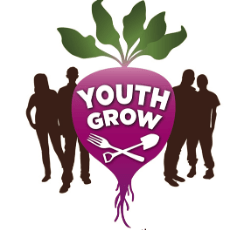Home | Unit 1 | Unit 2 | Unit 3 | Unit 4
- Introduction and Curriculum Overview
- Introductory Presentation for educators and youth leaders

- Unit One: What’s My Story?
- Unit Two: What Do I Know?
- Unit Three: Community Action
- Unit Four: Let’s Do It!
- NYS 4-H Virtual Meeting Guidance
- Suggested Activities for Certificates of Completion
In New York State, climate change is already having a profound impact on society, the economy, and natural ecosystems. The agricultural growing season is fluctuating. Coastal and inland flooding is happening more often. Populations of plants and wildlife are changing. Catastrophic weather events are more likely, and their costs to human life and buildings is increasing.
~NYSERDA Climate Change in NYS, 2019
Cornell Cooperative Extension (CCE) is committed to educating everyone about climate change and helping us each to implement the strategies that are needed both to adapt to these changes and mitigate impacts. Youth are becoming increasingly aware of the environment around them, whether at home, in school or the community. They are beginning to understand their futures are dependent on their present behaviors and they are also beginning to recognize that positive changes, no matter how big or small, will result in positive outcomes for their future lives.
Home, school and community gardens, public spaces and land use are all living labs that provide evidence of changing climate conditions. They are examples of how people adapt and adopt sustainable practices to address these changes to alleviate the acceleration of climate change. Gardeners see the impacts of the changing climate on their gardens, and they deal directly with extreme wet and dry conditions, unseasonable cold and freezing conditions, increases in new pests and invasive species, changes in plant diseases, variability in heat and hardiness zones, and extreme weather events. Our Gardening in a Warming World and Gardening in Our Warming World: Youth Grow! materials aim to provide guidance and resources to support youth leaders, garden-based educators and volunteers as they are increasingly called upon for information in the face of this new challenge.
Introduction
Gardening in Our Warming World: Youth Grow! consists of an updated curriculum and unit-based Facilitator Guides for youth on Climate Change, replacing the existing “One Seed at a Time- Climate Change in the Garden” curriculum. It will complement the Cornell GBL adult “Gardening in a Warming World” with links to Youth Grow, Seed to Supper and 4-H activities. While activities include the science of climate change, cause and effect, and actions we take to address the issue, we would like the tone to be less alarming therefor preventing climate-anxiety. Activities are more self-reflective and inspiring, with exploration on what people and communities are doing, what youth themselves can do now, and how they see themselves in the future making positive changes. The focus is on systems thinking, sustainability and food systems. Activities are appropriate for Beginning, Intermediate and Advanced skill levels (grades 3-6, 7-12) with some early learning introduction.
The Gardening in Our Warming World: Youth Grow! curriculum consists of four conceptual units, each with corresponding activities and lesson plans following the 4-H Thriving Model, 4-H Guided Inquiry format, and Common Core Learning Standards. Included are links to relevant resources and additional lessons and activities, and suggestions on how to facilitate dialogue on this occasionally challenging topic. An accompanying PowerPoint presentation can be shared with other educators to introduce and curriculum and teaching strategies.
The comprehensive Facilitator Guides for each unit provides detailed information, and youth and adult handouts and resources for teachers, garden-based educators, youth leaders and volunteers to use in teaching climate change and how it affects our lives, gardens and the environment. The curriculum reflects on the core elements of Systems Thinking and offers hands-on, authentic activities for youth, with helpful tips for ways for adult leaders and educators to present climate change education, action, adaptation and climate mitigation in positive ways.
Skill Levels
- Beginning– Elementary grade reading level; ages 8-10 with little or no experience in the project area
- Intermediate– Middle school reading level; ages 11-13 with three to five years of experience in the project area
- Advanced- High school reading level; ages 14-18 with five or more years of experience with the content
How to Talk About Climate Change with Youth
Since climate change perspectives may differ, it is advisable for educators and youth leaders to be ready to respond to those feeling climate anxiety or those in need of science-based knowledge. To provide the public with awareness of climate change risks, we need to frame conversations around climate change impacts and the capacity of our communities to adapt and be engaged. We need not have all the answers to play a critical role in addressing climate change, since this is an ever-changing, complex topic that still has unknown factors.
Facilitate conversations and dialogue that allow youth to fully engage and express personal viewpoints, and to process any emotional response such as worry, fear, interest, and curiosity which may emerge in their understanding about climate change vision of the future. We can promote a positive tone while using of scientific evidence, when participating in discussions around the critical nature of the issue and offer strategies for curbing and adapting to climate impacts.
For Certificate of Completion award templates, please contact alm443@cornell.edu.
References
- Cornell Garden-Based Learning, Gardening in a Warming World
- New York State Energy Research and Development Authority: Climate Change
- Oregon State College of Public Health and Human Sciences: 4-H Thriving Model



